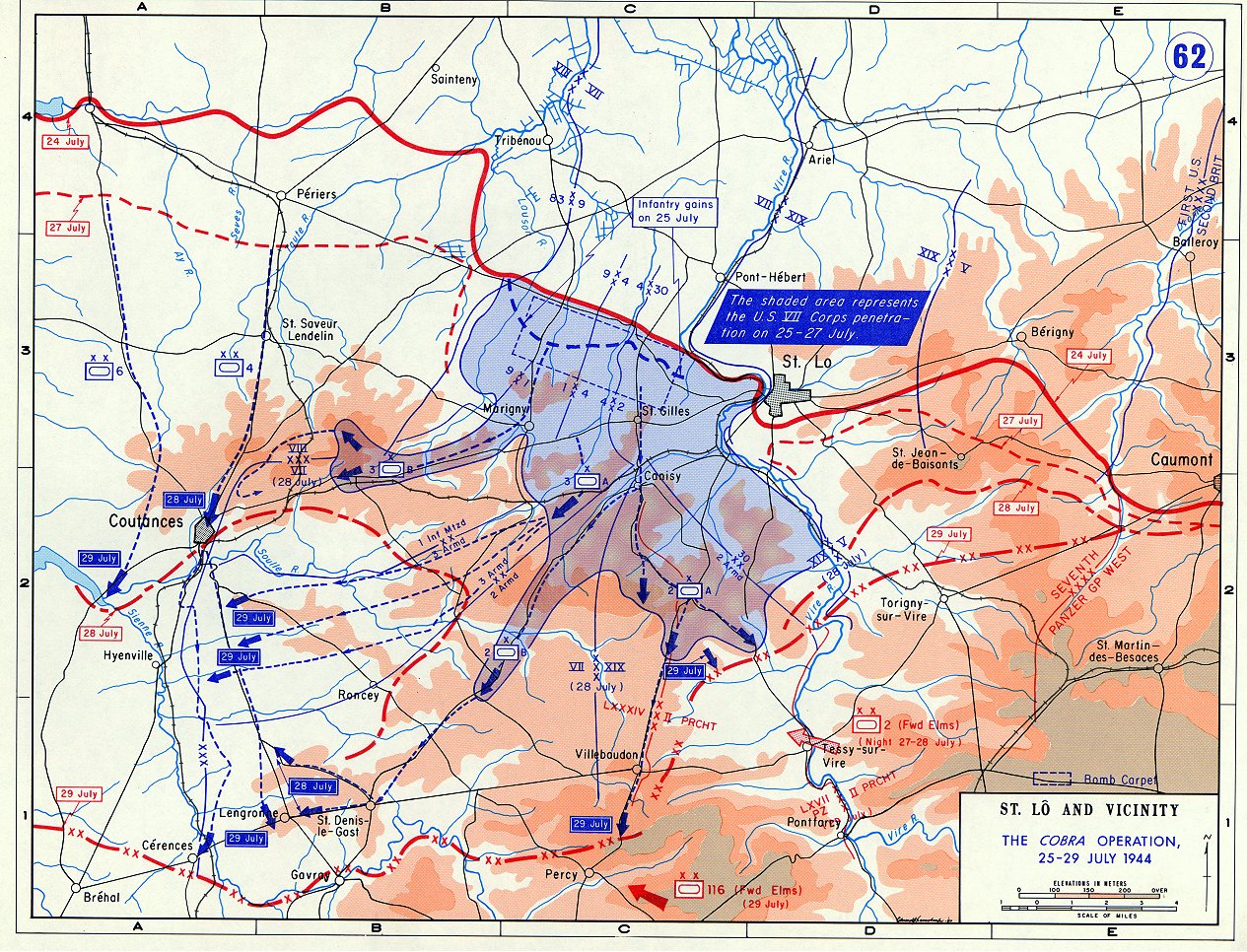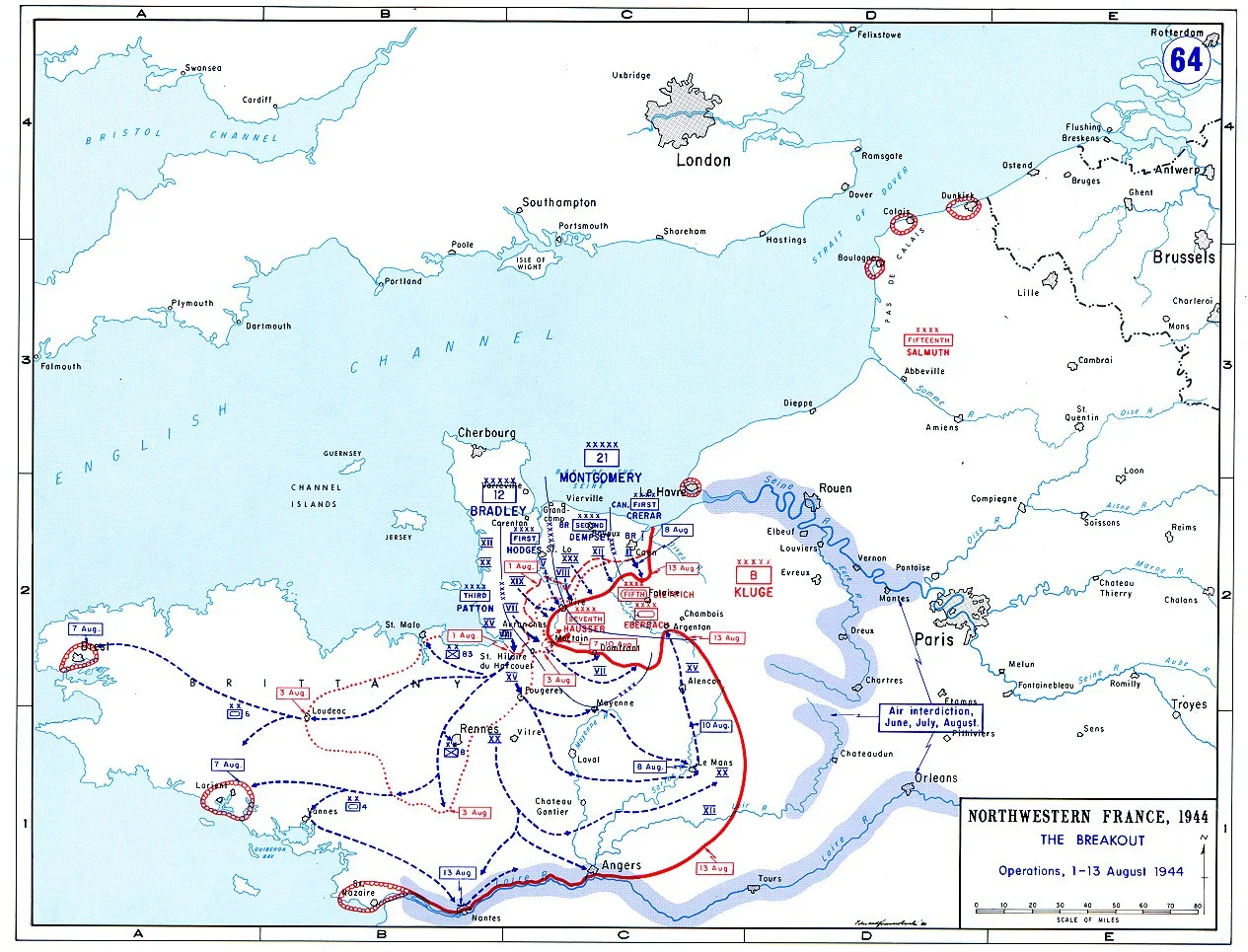The Falaise Pocket (#279)
Today’s post covers another aspect of World War II, European Theater of Operations -- the Falaise Pocket.
This year, I am doing a series on leaders and leadership in the European Theater of Operations (ETO) in World War II. This is 24th in the series. Check out the blog to see them all or go to the links at the bottom of this article to see the most recent ones.
The Falaise Pocket
By early August 1944, the Allied invasion had stalled. The foothold had been established on the European continent but the troops were bottled up in the bocage of the Normandy countryside. The Nazi defenders had put up a stronger resistance than expected. British forces had expected to liberate Caen immediately after the invasion (see the Hillman Strongpoint post) but it took them almost to the end of July to clear out the last German defender. Similarly, US forces had expected to control Saint-Lô in early June, yet German resistance delayed the Americans until after Caen's liberation.
On the other hand, the German Army had its challenges as well. Most of its troops were in the front lines. Few panzer divisions remained uncommitted, especially after the British launched Operation Goodwood. And the Allied air forces had tactical air superiority. Any German unit that dared to move in the daylight was bombed and strafed by American and British fighters. Also, the bombing campaign against the French transportation network continued which limited the availability of food, fuel, and ammunition available to the German Army.
To break out of Normandy, the Allies planned a multi-stage operation. Operation Goodwood, a massive British and Canadian tank attack in the east near Caen, initiated the breakout on July 18. The German Army responded by sending a large portion of its tank reserves to stop the attack. Operation Cobra, the second stage of the offensive, happened in the west, as thousands of American bombers carpet bombed a 6,000-yard corridor through German lines near Saint-Lô starting on July 25th. The 2nd and 3rd Armored Divisions (see Death Traps for more on the 3rd Armored Division) spearheaded the attack through the corridor. The Americans pushed through the gaps in the Nazi’s defenses and began pushing south.
On August 1st, Lieutenant General George S. Patton was named the commanding officer of the newly recommissioned US Third Army — which included large segments of the force that had broken through the German lines. The Third Army quickly pushed south and then east, meeting little resistance. Concurrently, the British/Canadian troops pushed south as part of Operation Bluecoat (a follow-on operation to Goodwood) in an attempt to keep the German panzers divisions preoccupied. The two attacks forced the Germans back and eventually turned into a rout as the orderly withdrawal eventually collapsed due to lack of fuel.
Breakout and Falaise Pocket
On August 8th, Allied ground forces commander General Bernard Montgomery ordered the Allied armies to converge on the Falaise–Chambois area to envelop German Army Group B, with the First US Army forming the southern arm, the British the base, and the Canadians the northern arm of the encirclement. The Germans began to withdraw on August 17. Two days later, two arms of the encirclement were almost complete: the U.S. 90th Infantry Division had made contact with the Polish 1st Armored Division. The Germans kept the pocket from completely closing until August 22nd. With the close of the Falaise pocket, the battle of Normandy was officially over.
Perhaps 100,000 German soldiers escaped the Falaise Pocket, but they left behind 40,000–50,000 prisoners and more than 10,000 dead. In addition, 344 tanks and self-propelled guns, 2,447 soft-skinned vehicles and 252 artillery pieces were found abandoned or destroyed in the pocket.
The Allied Liberation of Paris came a few days later. Finally, on August 30 the remnants of the German Army Group B retreated across the Seine River, completing Operation Overlord.
After the war, historians criticized the British, the Canadiens, and the Americans for not closing the pocket fast enough which allowed veteran German troops to escape, albeit without equipment. These veteran German troops would continue to defend Germany until May 1945.
Conclusion
The last five blog posts on leaders and leadership from the World War II European Theater of Operations are:
Interested in bringing your team to Leadership Experience that uses historic case studies, like the Falaise Pocket during World War II? TFCG offers the D-Day, Market-Garden, and Battle of the Bulge Leadership Experiences in Europe. TFCG also offers the Eisenhower, Currahee!, the War in the Pacific Museum, and Pearl Harbor Leadership Experiences in the United States. Send me an email and we can start the discussion today about building better leaders in your organization using a historic Leadership Experience. Or click on one of the pictures to learn more about that specific program.
In the meantime, go on the offensive and use the story of the Falaise Pocket to inspire you this week.


